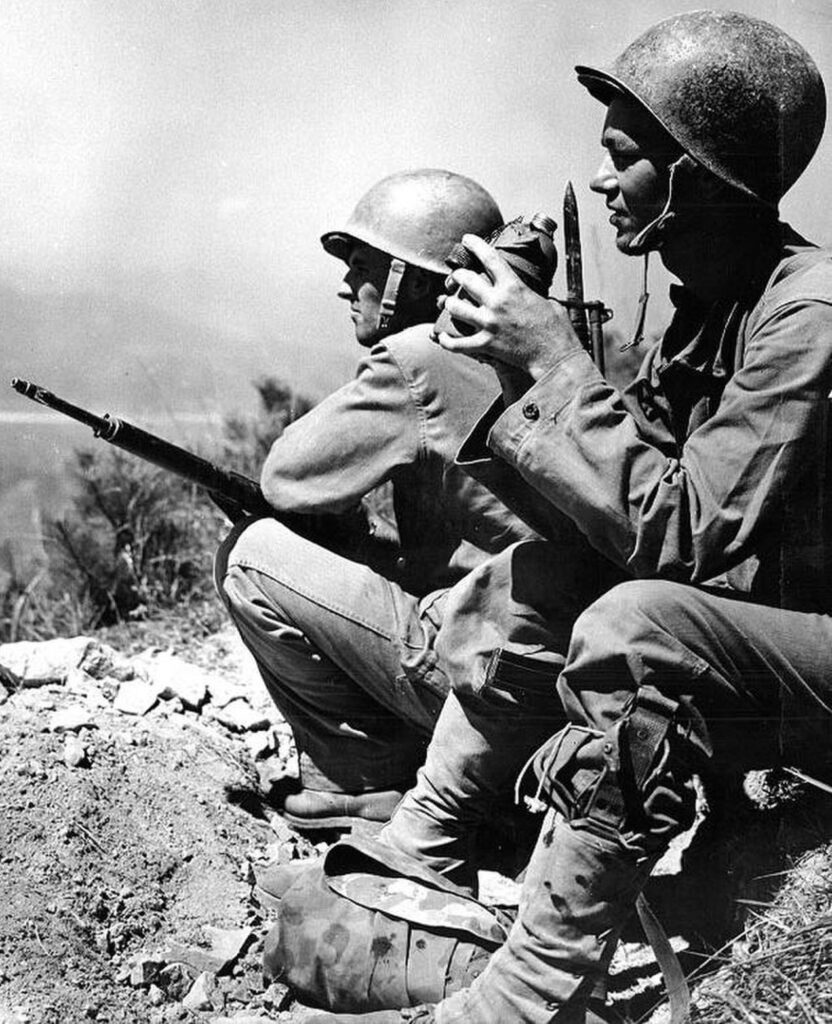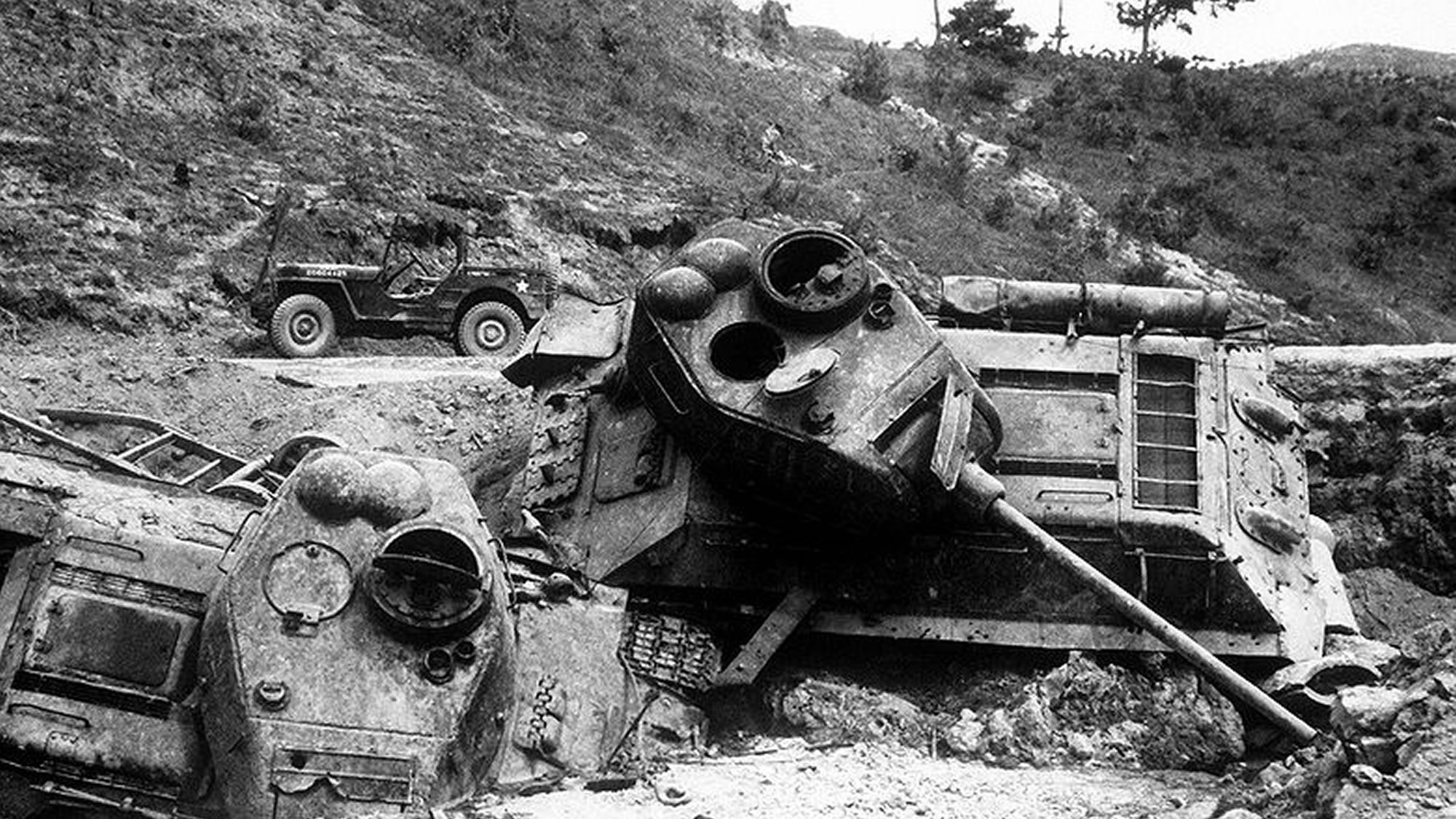In the early days of the Korean War, things looked pretty bleak for the American and South Korean forces in the Korean Peninsula. The sudden Communist advance across the 38th parallel took the allies by complete surprise, and despite stiff resistance, North Korean troops almost pushed the U.S. and South Korea into the Sea of Japan. Those defenders fell back into a 140-mile battle line around the port city of Pusan (now Busan) at the southeastern tip of the peninsula. They determined that this Pusan Perimeter would be their last stand until they were either relieved or overrun.

For six weeks, the Americans and South Koreans held out until reinforcements could be brought en masse. After landing a large force in the North Korean rear at Incheon, the besieged troops inside the perimeter broke out of the line and sent the Communists scrambling back to the North Korean border – and beyond.
Logistics in the Battle of Pusan Perimeter
On June 25, 1950, North Korea decided to take advantage of the post – World War II drawdown of American forces in the Pacific region. With the strongest American presence being all the way in Japan, the Communists sent 89,000 troops in six columns across the 38th parallel, the postwar border between North and South Korea.

Caught completely by surprise, 38,000 South Korean defenders were neutralized almost immediately. Pockets of resistance were crushed in the initial North Korean advance. The U.S. Army’s 24th Infantry Division was immediately ordered from Japan to Korea to help stop the bleeding, but they were still outnumbered.

As North Korea’s Korean People’s Army (KPA) advanced, allied resistance toughened, but it would not be enough to stop the KPA completely. However, the increasing resistance bought the allies time to disrupt the North Korean movement and took a heavy toll on the KPA’s numbers.
It cost the Communists, 58,000 men to push the allies to Pusan. They would have to use untrained conscripts and green soldiers to continue, which would prove critical in defense of Pusan’s 140-mile front.
The United Nations also voted to intervene in Korea, proving pivotal in pushing the North Koreans back. With the Pusan Perimeter in place, the allies fought the Communists back as they waited for help from abroad.
During this time, the North Koreans didn’t help themselves much. Their own supply lines were stretched thin with their quick advance across the peninsula. To recoup the loss in manpower, it took to push the defenders to Pusan; they raised 13 infantry divisions of inexperienced troops to face a firm allied defensive line.
By July 1950, the Republic of Korea (the South Koreans, also known as ROKs) had taken some 70,000 casualties. At the line, 70,000 KPA soldiers and 40 Soviet-built T-34 tanks faced down an estimated 47,000 American ground troops and another 45,000 ROK soldiers.

But the UN forces had complete control of the seas around the peninsula and complete air superiority. Ships from the Royal Navy and British Commonwealth countries provided naval support.
The Pusan Perimeter itself was bounded on either side by large bodies of water, with the Sea of Japan to the east and the Naktong River to the west. Punch through the line required the KPA to traverse difficult mountainous terrain in the thick summer weather. There would be no more retreat for the United Nations forces.

The North Korean’s Advance in Four Separate Locations
In August 1950, the North Koreans advanced on the Pusan Perimeter in four separate locations; Masan and Naktong in the south, Taegu in the north, and Kyongju in the east.
At Masan, Task Force Kean met the KPA in three days of heavy fighting and managed to capture Chondong-ni, but a Communist counterattack with T-34 tanks wiped out American artillery units in the area. Marine Corps tanks responded in force, but the Americans were forced to withdraw to Masan, giving up all the ground they’d retaken.
In Naktong, the Communists managed to cross the Naktong River and advance between the American lines. This attack caught the U.S. forces by surprise, and the KPA made some quick initial gains. American forces pushed them back across the river within seven days. The North Koreans retreated in such a hurry; they left behind their artillery, which the Americans quickly turned on them.
Around P’ohang-dong, Taegu, and elsewhere, the fighting raged in a similar fashion. American planners failed to anticipate the North Koreans’ ability to cross rivers effectively and were often caught unprepared for the KPA advance. But even where the Communists had the superiority in numbers, they only had 70,000 troops along the entire perimeter.
The North Koreans made more than a half-dozen river crossings to penetrate the Pusan Perimeter but were repelled, scattered, or annihilated within days – and sometimes hours – of the allies’ response. Many times, UN naval bombardment and aerial support were the critical factors in pushing back the KPA advance.
Even in areas where North Korea massed its most experienced and well-supplied troops, they were unable to face down a force of U.S. Army and ROK soldiers and the United States Marines supplied by air and supported by naval guns and aerial bombing.

By the end of August, the Communist forces were in desperate need of supplies. The U.S. and UN air forces were wreaking havoc on transportation hubs and other military centers in their rear, and UN forces were massing all along the Pusan Perimeter. Moreover, they had taken tank losses in numbers they could not afford.
Its last-ditch effort to push the Americans into the sea came after dark on August 31st and in the early morning hours of the next day to negate UN naval and air supremacy. A total of 13 divisions pushed nearly simultaneously at five points along the fighting line, in what the North called “The Great Naktong Offensive.”
Once again, the UN forces were caught by surprise, believing that North Korea no longer had the ability to mount such an offensive. From September 1st to September 8th, the KPA forced the United Nations troops to desperately defend the perimeter. The line was stretched thin and mobile reserves had to be moved all along the lines to control the incoming invaders’ ebb and flow.
The Communist offensive managed to break through the line but never effectively broke out in any single area. It forced the 8th Army headquarters in Taegu to fall back to Pusan, and it forced the Army to form another fallback position. By the 8th of September, however, it was apparent the Pusan Perimeter would hold.
On Sept. 15, Gen. Douglas MacArthur landed 40,000 allied infantry far behind the perimeter at the port city of Inchon. With their supply lines decimated, amasses a group of fresh troops behind the perimeter, and now 40,000 UN troops in their rear, the North Korean People’s Army fell apart.
The remaining North Korean troops hightailed it from Pusan to the 38th parallel, being chased by UN forces along the way.
Read About Other Battlefield Chronicles
If you enjoyed learning about the Pusan Perimeter, we invite you to read about other battlefield chronicles on our blog. You will also find military book reviews, veterans’ service reflections, famous military units and more on the TogetherWeServed.com blog. If you are a veteran, find your military buddies, view historic boot camp photos, build a printable military service plaque, and more on TogetherWeServed.com today.

Very good information for all of us to know and remember the many who died fighting in Korea. Thank you.